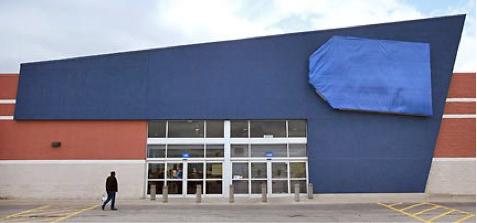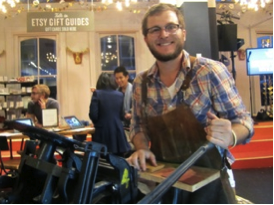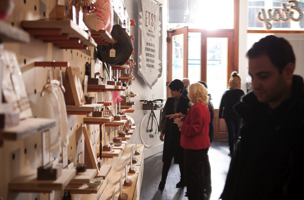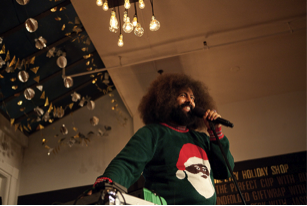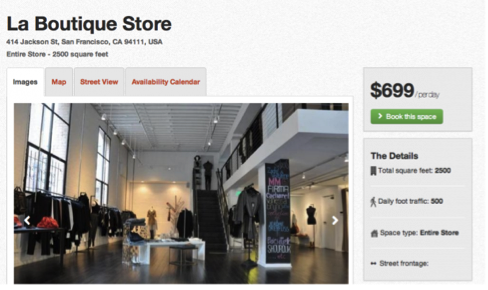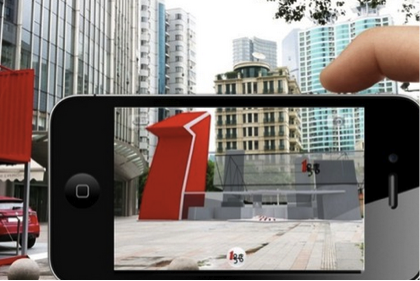For decades, the world of retail has been dominated by the idea of the big box. You know the ones: huge, shed-like edifices, 50,000+ ft2, usually on the edge of town. We loved them for their giant range of products, that they always had the stuff we were looking for, and that their prices were amazing. Why bother with the little shop? Yet, are we in the midst of experiencing a turnaround in attitude?
Best Buy, one of the world’s greatest exponents in the art of the big box, has hit the buffers of late, with same store sales falling 4.3% in the final quarter of last year. Significantly, this period included Christmas, the season when some retailers see up to 40% of their annual sales. A number of the big boxes are blaming ‘showrooming’, the idea that people look at products in-store but buy them cheaper online. However, the malaise runs deeper than showrooming. Many of these big boxes lack a distinct point of view. Going into a Best Buy feels pretty much like Walmart; it offers pretty much the same as Amazon. There’s just a sea of sameness. People are demanding more—big and bland is facing a new competitor, the chain of one. And this new chain is focused, passionate and not afraid to have an opinion.
Photo. Best Buy shopping mall
The rise of the new niche
In many ways, the reappraisal of what we want from retail chains reflects a move back to the days of the specialist, who gave great service because they were closer to their products. They either made them themselves or knew intimately about where they came from and who made them. Technology has also liberated those with a product or brand idea. To see what can be achieved, we only have to look to the likes of Etsy, the social commerce website that’s focused on arts, crafts, handmade and vintage. It’s on a mission to help people make a living making things, and to reconnect makers with buyers. The site is home to over 800,000 independent sellers from nearly 200 countries and follows the tradition of open craft fairs, giving sellers personal storefronts where they list their goods. It’s been compared to ‘your grandma’s basement’ and a ‘crafty cross between Amazon and Ebay’.
What is really interesting is how they are now experimenting with bricks-and-mortar retail. In the run up to the Holiday season last November, they opened a pop-up shop in New York City’s SoHo, a trendy neighbourhood known for high-end stores. The primary motivation wasn’t to sell though, it was to translate its online brand experience to the offline world.
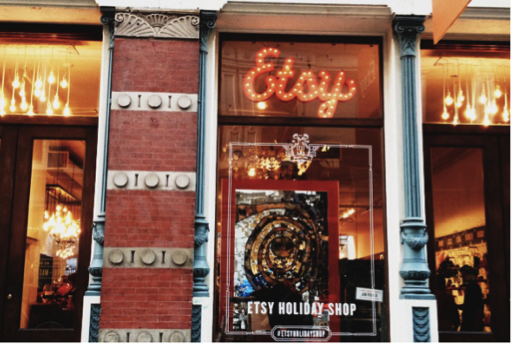
Photo. Etsy holiday shop in NYC
Some neat ways in which they did this included a guest-curator wall that recalled Etsy’s homepage. It showcased items from Etsy sellers that had been hand-selected by the shop’s nine guest-curators, an eclectic mix, ranging from Martha Stewart to comedian-musician Reggie Watts. The customer-service experience was further enhanced by surprise extras, including free in-store haircuts from high-end barbers, an evening open bar, and a diverse line-up of workshops and events ranging from ornament-making to banjo music and lectures on the history of code. Building on this, they supplemented word-of-mouth marketing for the shop with geo-targeted social-media ads and two local, hand-painted billboards.
Photos. Inside the Etsy shops
Compare this rich, multi-sensory, social experience to that of the homogenous big box. The chain of one (combined) wins hands down!
Etsy may have helped fuel the chain of one revolution but others are joining this new retail movement. Storefront, the San Francisco-based start-up that’s also operating in New York and Los Angeles, recognise that it isn’t easy to scout for available retail space, negotiate with brokers and set up shops that sometimes last as little as a couple of days. So they’ve set themselves up to serve as a marketplace for short-term retail space by connecting small online retailers to available storefronts. And their goal is a simple one. To make building an offline store as easy as starting an online one.
Co-founder Tristan Pollock is convinced they’re on to a good thing. ‘We currently see a huge trend in e-commerce growing, and pop-up retail is riding its tailwinds. As more companies move exclusively online, they eventually desire to return to meeting their customers in person without the expensive overhead of a traditional store.’ Since launching in September 2012, Storefront has seen more than one million square feet of space listed and hundreds of request from brands.
Photo. Storefront, SF-based start-up
Window shopping 2.0
While the chain of one is leading the charge for a more individual shopping experience, personal shopping is about to move to another level. The use of augmented reality will become mainstream. Already, Chinese e-commerce site Yihaodian is giving people the chance to browse around inside a virtual outlet, projected over the top of their surroundings at certain locations. Using QR technology and GPS location-tagging, it plans to open around 1,000 virtual stores in Shanghai, Beijing, Guangzhou and Shenzhen.
Photos. Chinese e-commerce site Yihaodian plans on opening 1,000 virtual stores in several cities across the country
Shoppers will be able to browse items and walk around a 1,200-square-meter store. There will be no need to stand in line or carry their purchases home. Being in the virtual store space, they simply use their smartphones to view the products and buy them. Each virtual store will offer the same benefits of online shopping, including promotional discounts, but with an intuitive experience of a bricks-and-mortar shop. Shoppers can walk around digital rooms containing products normally available on Yihaodian’s website, then order what they want for home delivery.
Get inline
In the not-so-distant future, we can forget about offline or online retailing. People today are constantly shifting their attention between the physical world and the internet, making it meaningless to think of physical and digital as two separate realities. Retailers who get this will benefit from understanding people’s desire to shop whenever the mood takes them, and their ability to combine the benefits of both worlds.
About the Author

Greg Taylor became founding partner in global brand design consultancy Elmwood in 1989. Now Director of Brand Provocation, Greg is the creator and facilitator of Step Change™, Elmwood’s strategic tool for moving ideas forward. Clients include ASDA, Wal-Mart, Arla Foods, BBC, COI (Defra and DfT), Cable&Wireless, Comic Relief, Debbie & Andrew’s, Durex, Glasgow 2014 Commonwealth Games, McCain, and the Met Office.
